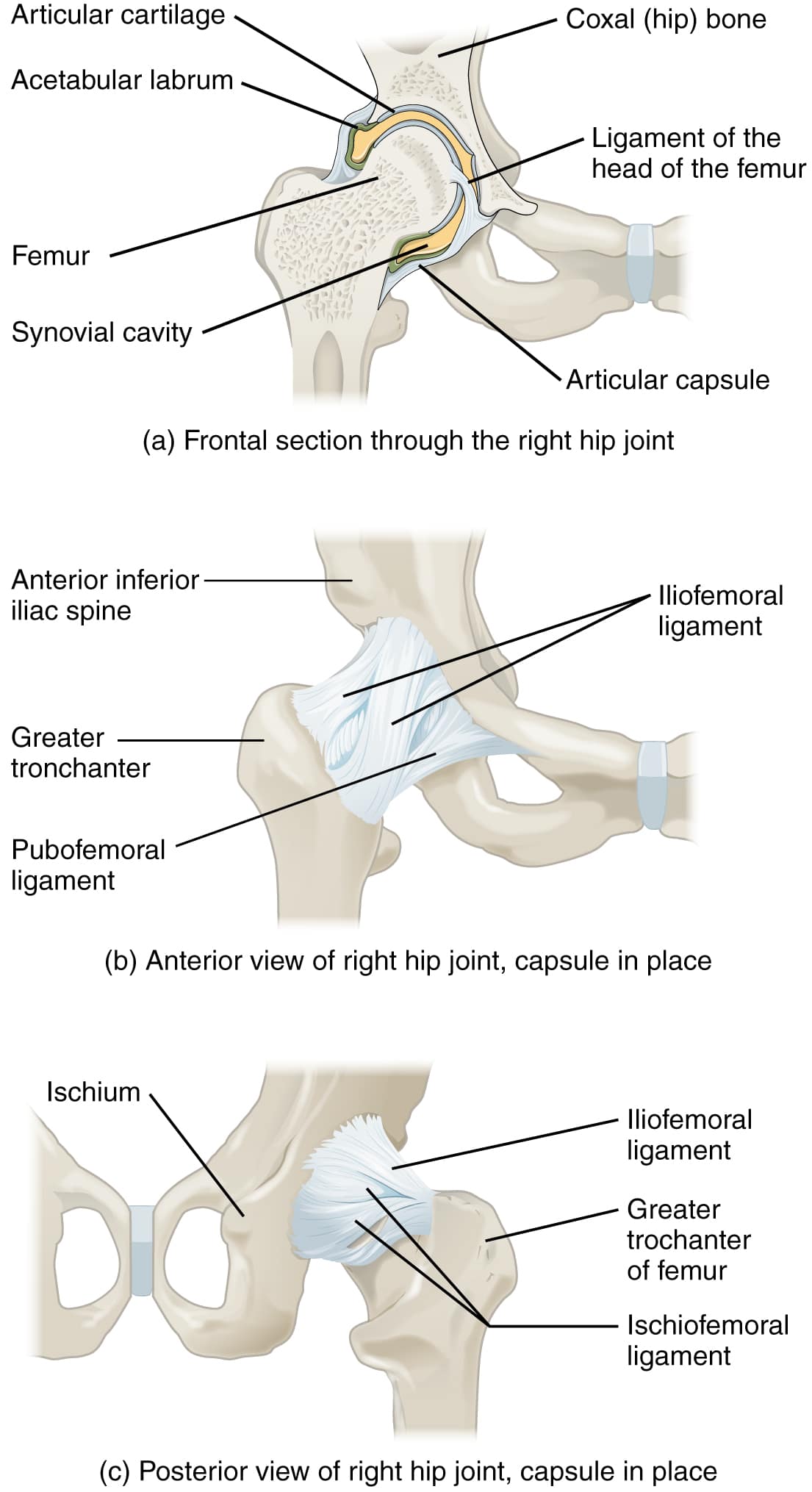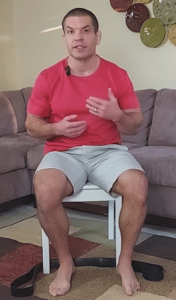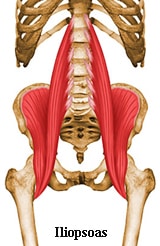Do You Have Stiff Hips?
If you have stiff hips, watch the video below to learn 7 hip mobility exercises that may help.

Who Are These Hip Mobility Exercises For?
These hip mobility exercises are particularly good for seniors or other people with hip arthritis.
They're also good for younger more active people with stiff hips from femoroacetabular impingement (FAI).
Additional, they're also good for people with lower back problems or knee problems. Often when you have stiff hips, your body ends up compensating either above, at your lower back, or below, at your knees.
So if you have stiff hips and you'd like to improve your hip mobility, then give these 7 hip mobility exercises a try.
Benefits of Hip Mobility Exercises With A Band
The 7 exercises I'm about to show you aren't just any hip stretches.
They're specifically designed to simulate hands-on joint mobilization techniques that we use here in the clinic.
When you have stiff hips, you can't just stretch the muscles; you actually have to stretch the hip joint capsule.
Often we do that with in the clinic hands-on techniques.
However, if you're looking for a way to stretch a stiff hip joint capsule at home, you can use an exercise band as an alternative.
You'll need a pretty thick band in order to do these exercises.
You can't just use a flimsy band like you'd get at a physical therapy office.
Here's a link to the band used in the video:
Assisted Pull up Bands Set (Single Band)...
$5.99 (as of July 26, 2024 14:27 GMT -05:00 - More infoProduct prices and availability are accurate as of the date/time indicated and are subject to change. Any price and availability information displayed on [relevant Amazon Site(s), as applicable] at the time of purchase will apply to the purchase of this product.)Once you have the band, you can get started with the hip mobility exercises below.
7 Hip Mobility Exercises for Stiff Hips
Exercise 1 - All 4's Stretch For A Stiff Hip Posterior and Inferior Hip Capsule
The first exercise is an all-fours rocking exercise.
This is to improve the motion of hip flexion, which is bringing your knee closer to your chest or your chest closer to your knee.
This is different from the child's pose.
It's not a lower back stretch. We want to isolate the motion to your hip.
This helps stretch a stiff hip joint capsule
This is good for people who have trouble lifting their leg to get in a car to go upstairs.
It's also good for people who have trouble putting on pants or putting on socks.
Those are all hip flexion motions.
When you go into hip flexion, the ball of your hip joint has to glide towards the back of your body and also downwards towards the foot of your body.
This exercise uses gravity to push your body downwards, so the band is not required. When doing this exercise, it drives the ball of your femur backward in the hip socket.
To do this exercise, get your back arched down slightly. This prevents your lower back from rounding when you rock back. This in turn isolates motion to your hip joint.
The rocking back motion creates a posterior or backward glide of the hip joint as shown above. This motion helps mobilize the back part of the hip capsule.
As you rock back, you might feel slight pinching in your groin.
This is where the band comes in.
Secure the band around a firm piece of furniture such as a couch.
Then place your knee inside the band and pull the band up to the crease of your hip joint.
Next, crawl forwards to place tension on the band.
This pulls the ball of your hip joint backward in the socket.
This should decrease the pinching in the groin and allow you to rock back slightly farther.
Exercise 2 - Lying On Back Hip Flexion Mobility Exercise With Band
If you are unable to kneel, another option would be to do the exercise on your back.
Instead of kneeling, place the band around your leg and scoot back to increase the tension.
Make sure to place the band as close to the crease of your hip joint as possible. Then, pull your knee up to your chest.
This modification provides the same inferior glide as the kneeling version. However, it does not provide a posterior glide.
Exercise 3 - Lying On Back Piriformis Stretch With Lateral Glide
While lying on your back, turn a little bit so that the band is pulling sideways, but not directly perpendicular. It should pull about 30-45 degrees closer to your legs than perpendicular.
The reason for that is due to the orientation of the hip joint.
The neck of the femur is about 120-135 degrees relative to the shaft of the femur.
The band should pull in line with the neck of the femur.
Create tension with the band and perform a piriformis stretch with your legs crossed like a figure 4.
Hold the stretch for about two minutes. Capsular tissue takes time to stretch, so make sure to hold it long enough.
Exercise 4 - Seated Piriformis Stretch With Lateral Glide
This exercise is designed for people who can't get down to the floor.
For this exercise, loop the band underneath the chair so that one edge of the band comes out of either side.
Place the band around the affected leg and grab the other side with your other hand.
Pull the band up so that it goes underneath the chair. Make sure to place the band as close to the actual hip joint as possible.
Loop the other end of the band around your arm.
Pull the chair taught under the chair, using the chair as a pulley. This creates a distraction force for your hip joint.
Next cross your leg like a figure 4, again doing the piriformis stretch.
Hold the stretch about 2 minutes at a comfortable stretch intensity.
Exercise 5 - Kneeling Hip Lateral Distraction Exercise For A Stiff Hip Capsule
The next two exercises are more advanced because it requires you to kneel on one knee.
The foot of the hip you're stretching should be on the floor in front of your while you kneel on the opposite knee.
Place around your thigh close to the hip joint. The band should again pull outward and slightly downward and backward.
Pull your knee inward into a position of adduction and internal rotation as show above.
This is the most compact hip joint position where the hip joint capsule is the tightest.
Meanwhile, the band pulls outward on the hip stretching the tight hip capsule.
For the second part of this exercise, move into a position of hip external rotation similar to the "pigeon pose" in yoga.
Hold the stretch at a comfortable intensity for about 2 minutes.
This provides a strong stretch to the hip, but it's also an advanced stretch. Try the other piriformis stretches mentioned above first before you progress to this one.
Exercise 6 - Kneeling Hip Flexor Stretch With Band
For this stretch, it is good for people who have an anterior glide of the hip.
An anterior hip glide occurs when the ball of femur starts to glide too far forwards of the hip socket.
This anterior glide pinches the structures at the front of the hip and irritates the hip flexors (iliopsoas).
This stretch requires kneeling with one leg forward with the band pulling straight backwards.
Stretch the hip flexors of the back leg while the band is prevents the ball of the hip from gliding forward and irritating the hip flexors.
Hold the stretch for 2 minutes.
During the exercise, make sure you don't arch your lower back too much by rolling your pelvis under via ab contraction. You can also push your pelvis slightly forwards to feel a stronger stretch at the front of the hip/thigh.
Exercise 7 - Standing Hip Flexor Stretch With Band
If you can't do the kneeling hip flexor stretch, this last exercise may be better for you.
Secure the band to a waist-height stable structure such as a stair railing.
Then loop the band around your leg and place it at the front of the groin. You want the band to be pulling the head of he femur backwards.
Then, roll your pelvis underneath by tightening your abdominal muscles. You should feel a stretch in the front part of your hip/thigh.
More Help For Stiff Hips
Lastly, it is important to emphasize that each exercise will affect each person differently. However, you can give them a try and find the two or three exercises that work best for you.
While the exercises above are good, but it is not the same as seeing a trained orthopedic manual physical therapist.
Our physical therapists are experts in orthopedic manual therapy.
We can help you find out:
What's causing your stiff hips
What you can do to get rid of your hip stiffness
What hands-on techniques we can do to help you get better even faster
What you can do to keep your hip pain and stiffness from coming back in the future
If you live in the St. Louis area and need help for stiff hips or hip pain, tap the button below to request an appointment with one of our orthopedic manual physical therapy specialists.
Like this post? Check out these other posts:
What Causes Pain In Thigh Muscle?
Numbness In Legs: Causes and Treatment
5 Exercises For Hip Impingement (Femoroacetabular Impingement)


















